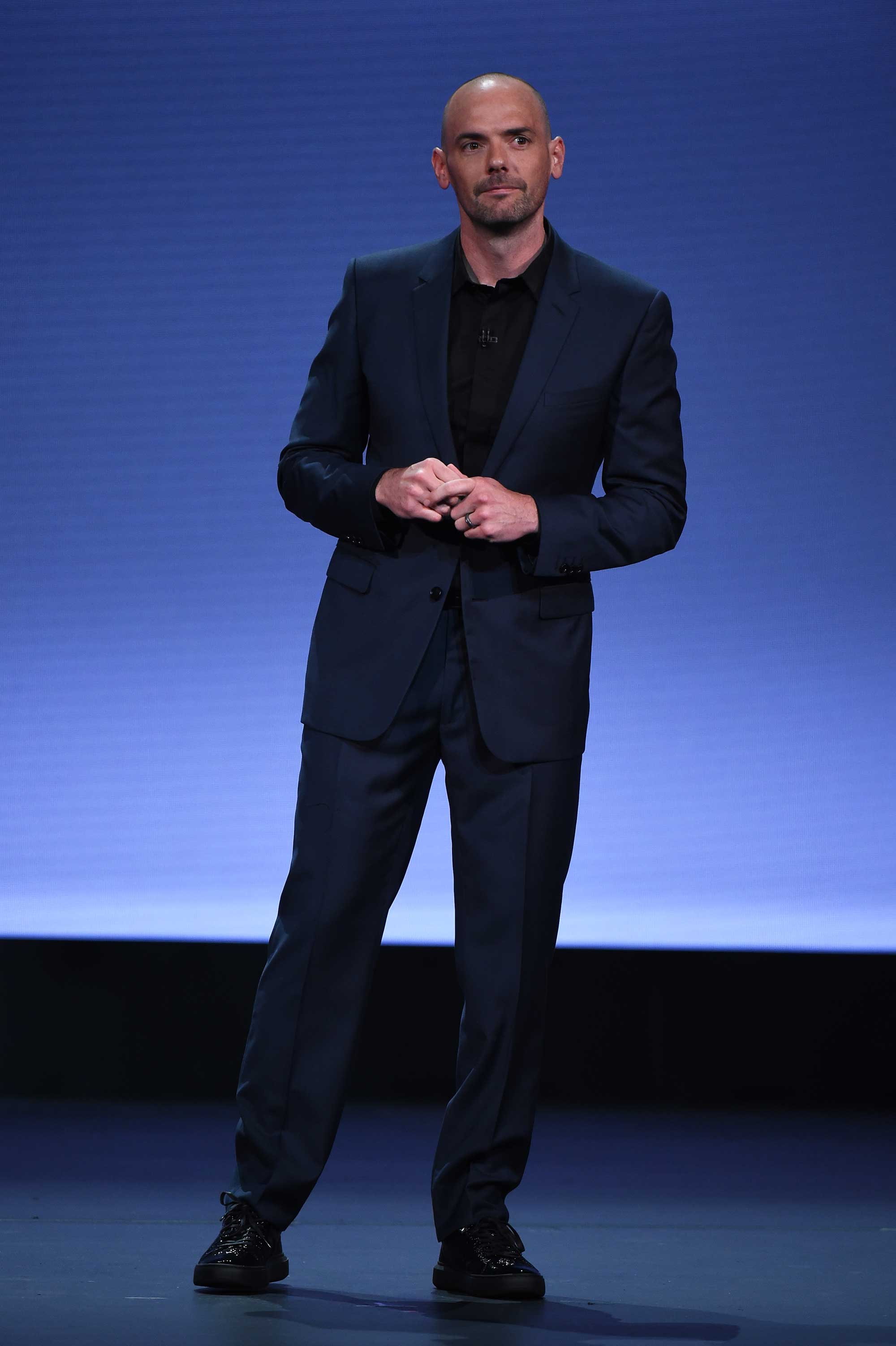Demand for TV Keeps Dollars Flat as Ratings Continue to Fall

WHY THIS MATTERS: With ratings down, some networks are looking to change the way the sell advertising in the upfront.
Fast as the television world is changing, TV advertising is slowly but surely following along.
As the networks completed their upfront presentations last week, media buyers said much of what would happen next would follow familiar patterns. But there was also a need to pursue viewers in new ways, generate additional attention and experiment with the data and technology that is revolutionizing other areas of the business.
“Television is still relevant,” said Andy Donchin, chief investment officer at Aegis Dentsu Network’s Carat. Even though ratings continue to erode, “the average person still watched close to four hours of TV a day, and a lot of what they’re watching is live, which is why I think TV has held up so strong and been so resilient.”
But money is migrating to follow viewers who are increasingly watching on-demand or over-the-top. And for the TV market, flat is the new up and a little bit down may be pretty good.
“We still haven’t got all our budgets in, but I think demand is going to be healthy,” Donchin said. “To me, even if demand is down single digits, that’s still a healthy demand for a medium that some people thought wouldn’t be around in 2018.”
In a new report, Pivotal Research senior analyst Brian Wieser said he expected digital advertising to grow nearly 20% in 2018, but national television to be down 1% to $44.1 billion. The TV industry books about 75% of its ad sales in the upfront market.
The smarter way to stay on top of broadcasting and cable industry. Sign up below
“At a national level, after initially seeing some growth, we now think the first quarter was probably slightly less than flat and expect a slight decline during the year,” said Wieser, who sees national TV spending falling another 2.3% to $43.1 billion in 2019.
Pushing Back
For the networks, a downward spiral in advertising revenue is no sign of a good business, so to various degrees, they’re looking to shake things up with new formats, new metrics, new technology and new promises of greater performance.

“Aren’t we tired of letting inertia rule our industry?” NBCUniversal chairman for ad sales and client partnerships Linda Yaccarino asked at NBCU’s presentation at Radio City Music Hall on Monday.
To keep ad dollars from going to digital, Yaccarino promised measurement that counted viewers across platforms, privacy-protected data and brand-safe content. “A lot of companies simply can’t guarantee that,” she said. “But we can and we do. So is TV a big investment? You bet your ass it is. Like I said, we’re in the results business.”
Donna Speciale, president of ad sales at Turner and another evangelist for advanced advertising, told clients how Turner had reduced the ads in its entertainment networks and would do so at CNN next.
“Our fans move seamlessly across our omnichannel universe and our partnerships must reflect how people consume today,” she said in the Hulu Theater at Madison Square Garden on Wednesday.
“To reach these fans you must buy differently,” Speciale said. “And we will make it simple for you. This upfront we will create one unified plan to buy all of our audiences across all of our platforms. You can target by demo or by audience segment.”
Using data to target by audience has already worked in hundreds of campaign for brands including MassMutual, Warner Bros. and Gatorade, she said. “Our industry spends a lot of time talking about the future but talk isn’t action and we’re not changing fast enough.”
The pitch was a bit different at Carnegie Hall, where CBS chairman and CEO Les Moonves took time out from the boardroom battle with Shari Redstone, the company’s major shareholder, and got a standing ovation before reminding clients that broadcast was still powerful.
“At CBS, we work with you to achieve shared objectives,” Jo Ann Ross, CBS’s president and chief advertising revenue officer, said.
“We agree that we must work together to achieve the right balance between commercials and content,” she added. “Unlike those that are focused on commercial loads, we do not believe that advertising is ruining the television business.
“At CBS, we’re unapologetic about the power of advertising and about the premium environment and the incredible value that we already provide for viewers and for you, our clients,” Ross said, adding that CBS also sees the value in over-the-top streaming.
“Today we’re open for business with new subscribers and exclusive first-party data,” Ross said. “Come on people — you knew you weren’t getting out of here without a data pitch.”
CBS unveiled CBS DNA, its latest data-enabled TV product. “DNA will use data to better understand our audience, to activate your campaigns and to provide analytics and attribution you seek,” Ross said. “Whether you buy on mass-reach demos, an optimized target or one-to-one addressability, CBS has the solution and we guarantee it.”
Guarantee This

Joe Marchese, Fox’s president of ad revenue, pushed back against the notion that the networks should guarantee sales results when they sell advertising.
Marchese described how successful a T-Mobile campaign was during the World Series.
“So why don’t we just guarantee the results?” he asked. “It seems popular these days for media vendors of all sorts to start guaranteeing sales outcomes. Forget that they have no idea what your product or your pricing or competitive market is going to be.
“I’ve never understood how anyone can promise you sales outcomes and then also work with your competitors,” Marchese said. “What we can promise is the greatest opportunity and environment to engage an audience. That means the greatest opportunity to deliver your pitch, to sell your products and to build your brands.”
CBS’s statement about advertising not being TV’s problem stood out to Lyle Schwartz, chief negotiating officer at media buyer GroupM.
Schwartz remarked on how the personalities of the different networks come out in their presentations. “They’re more distinct this year,” he said.
At the ABC presentation, which this year included the cable network Freeform, Disney/ABC Television president of advertising sales Rita Ferro talked about “The Disney Difference” and Luminate, the company’s data-driven advertising suite that includes inventory from ESPN.
Ferro highlighted campaigns in which clients used branded content that employed Disney characters and stories that lifted brand affinity and other metrics.
“We deliver reach, we deliver engagement and, most importantly, we deliver results,” Ferro said.
Merger Market
As the networks go to sell their ad inventory in this year’s upfront, many of them have either just completed or are in the middle of potential ownership changes, with The Walt Disney Co. and Comcast fighting over assets of 21st Century Fox and CBS and Viacom either combining or not.
Schwartz said the corporate intrigue didn’t affect what he’s got to do.
“It doesn’t make a difference,” he said. “It’s all about finding the best environment for our clients’ messages.”
During the presentations, the networks spent time showing their content. They also talk about how they’ll help marketers sell product.
Time will tell which of the new shows presented during the upfront will be hits and which will be quickly forgotten, Schwartz said. As far as partnership, the important work begins after the presentations end with the negotiation of prices and the execution of the campaigns. “That hasn’t changed,” he said.

What also haven’t changed are the laws of supply and demand. “Our ratings are going down and our price is going up,” was how the always astute Jimmy Kimmel put it on his return to Lincoln Center and the ABC upfront. “Too bad. Eat it.”
Carat’s Donchin said he expects the networks to price aggressively, but he’s looking at the new ways advertisers have to reach consumers to help push back.
“TV is the anchor with its unparalleled reach and awareness,” Donchin said. “There’s a lot of great stuff out there.” He’ll buy some entertainment, some news, some linear some digital, some targeted, some Prime Pods.
“My line is the only way to get more leverage in television is to take money out of television,” Donchin said. “So the more we can do with these innovative platforms, and add more supply into the marketplace and have more options where we can spend our money, the better for our clients.”
Jon has been business editor of Broadcasting+Cable since 2010. He focuses on revenue-generating activities, including advertising and distribution, as well as executive intrigue and merger and acquisition activity. Just about any story is fair game, if a dollar sign can make its way into the article. Before B+C, Jon covered the industry for TVWeek, Cable World, Electronic Media, Advertising Age and The New York Post. A native New Yorker, Jon is hiding in plain sight in the suburbs of Chicago.

